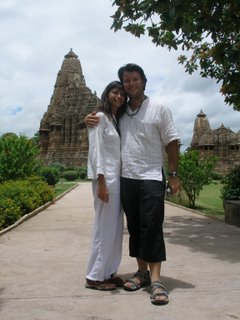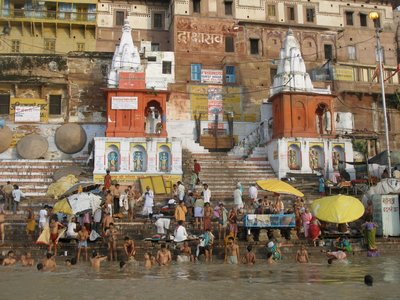
After a half night stop-over in Delhi, we took the 7am train to the north of India to the Punjab region and its main city Amritsar, the beating heart of the Sikh religion.
India is mainly Hindi with as much as 80% of the population belonging to this faith, then next in numbers are the Muslims (12%) and then to a far lesser extend are the Sikhs who represent about 2% and they are mainly concentrated in the Punjab region. The remaining percentages are made up of Buddists, Christians and Jainists.
Sikhism, which was born in the 15th Century at the hands of Guru Nanak, originated as a reaction against the Hindu caste system and Brahim domination, and believes in one God and rejects the worship of idols. Like Hindus and Buddhists, Sikhs believe in rebirth and Karma (the retribution of your past deeds).
The main attraction in Amritsar (which comes from the name Amrit Sarovar which means pool of nectar named after the largepool surrounding the temple) is the Golden Temple, an exceptionally beautiful and serene place, which is a complete contrast with the rest of the dirty, noisy and heavily polluted surrounding old city.
To enter the temple, eveyone must take off their shoes, wash their feet in holy water (basically a puddle (charco) in the ground which has a tap running into it) and cover their hair with a piece of cloth. Over 30,000 Sikhs visit the temple every day and night (its open 24 hours) and free food (lentil soup and chapati bread) is distributed to anyone who wants it. Also anyone can sleep there for free, but despite our condition of backpackers, we chose some horrible hotel that had giants ants climbing up the curtains! Thinking about it now, we should have stayed at the temple!!
Four priests inside the temple keep up a continuos chant in Punjabi from the Sikh holy book, and people queue up to pay hommage to the priests and listen to their chanting, and be close to the centre of their faith. The dome of the temple is said to be made up of 750kgs of pure gold and is in the shape of an inverted lotus flower, a symbol of Sikhism's aim to live a pure life.

The other main attraction in Amristar is the Jallianwala Bagh, a small park in the cetre of the town, which commemorates 2000 indians who were killed here by the British authorities in 1919 under the orders of General Dyer, while holding a peaceful demonstration. In response to this, Gandhi instigated his programme of civil disobedience and announced that 'cooperation in any shape or form with this satanic government is sinful'. The massacre spurred (desencadeno) Indian nationalism and increased demands for the British to quit India. Both the massacre and subsequent inquiry feature in Richard Attenborough's film Ghandi starring Sir Ben Kingsley. Giles, being British kept his mouth shut while walking through the park, especially as our visit was on the 15th August, the National Day of Independance from the British power.






















